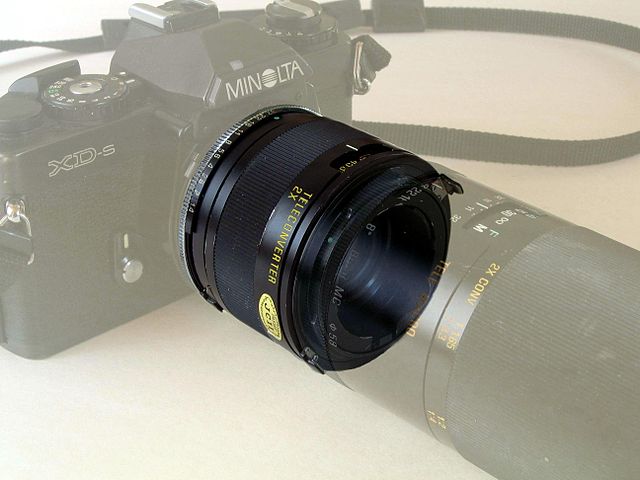A lens mount is an interface – mechanical and often also electrical – between a photographic camera body and a lens. It is a feature of camera systems where the body allows interchangeable lenses, most usually the rangefinder camera, single lens reflex type, single lens mirrorless type or any movie camera of 16 mm or higher gauge. Lens mounts are also used to connect optical components in instrumentation that may not involve a camera, such as the modular components used in optical laboratory prototyping which join via C-mount or T-mount elements.
Male mount of Minolta MC-Rokkor 58mm 1:1.4 lens with female lens mount of an Minolta XD-7
A teleconverter attached between a camera and its objective
This lens adapter is a passive adapter designed for mounting a Nikon F mount lens to a Micro Four Thirds camera.
A camera is an instrument used to capture and store images and videos, either digitally via an electronic image sensor, or chemically via a light-sensitive material such as photographic film. As a pivotal technology in the fields of photography and videography, cameras have played a significant role in the progression of visual arts, media, entertainment, surveillance, and scientific research. The invention of the camera dates back to the 19th century and has since evolved with advancements in technology, leading to a vast array of types and models in the 21st century.
Leica Camera (1950s)
Hasselblad 500 C/M with Zeiss lens
Different apertures of a lens
The distance range in which objects appear clear and sharp, called depth of field, can be adjusted by many cameras. This allows a photographer to control which objects appear in focus, and which do not.







